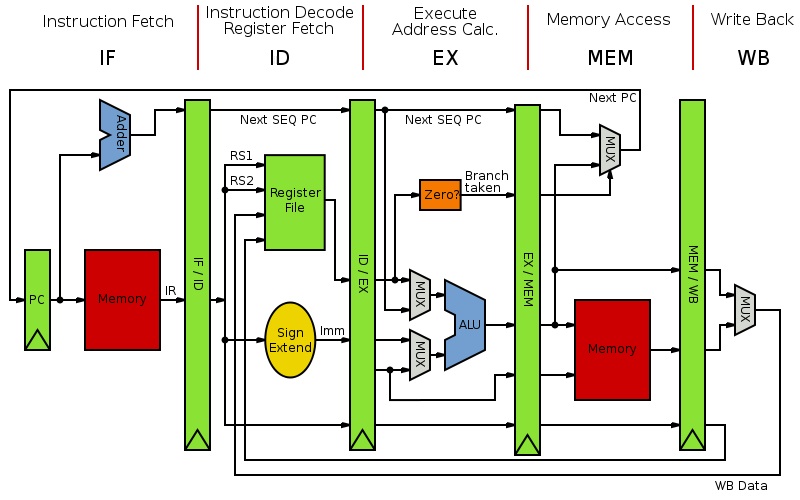
WEEK 7 LEARNING OBJECTIVES
Day 1
- Describe how pipelined microarchitectures
exploit instruction level parallelism to improve throughput.
- State the number of instructions in flight every
clock cycle when a basic ARM pipelines is full.
- Describe how pipelining improves throughput.
- State the theoretical pipeline speedup (compared to
single-cycle) for a pipeline of length n.
- State why the theoretical pipeline speedup cannot be achieved.
- Describe the use of interstage registers in pipeline
microarchitecture.
- List the five stages of instruction execution in
ARM pipeline microarchitectures.
- Draw an abstract blueprint showing the insertion of
pipeline registers between the stages of ARM instruction execution.
Show the feedback paths for PC update and register
write-back.
- Draw an ARM flight-plan diagram showing in-flight
instructions during pipeline fill and full pipeline execution.
- Justify the statement "Pipeline microarchitectures
make very efficient time usage of components."
Day 2
- List the three types of pipeline hazards.
- List examples of structural hazards.
- State how structural hazards are eliminated when
implementing pipelined microarchitectures.
- Justify the Harvard organization in pipelined
implementations.
- List the two broad categories of data hazards.
- Describe the hazard window for ARM pipeline
microarchitectures if hazard-protection is not implemented.
- Identify load-use and register-use data hazards
in code segments.
- Calculate hazard distances for a given instruction
sequence.
- List the three principal techniques used to remove
data hazards. Describe the advantages and disadvantages
of each technique.
- Describe how the hazard window suggests forwarding
paths for data hazard prevention.
- Draw an abstract blueprint showing the insertion of
pipeline registers between the stages of ARM instruction execution,
the feedback paths for PC update and register write-back, and forwarding
paths for data hazard prevention.
Day 3